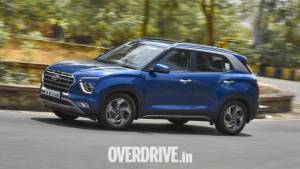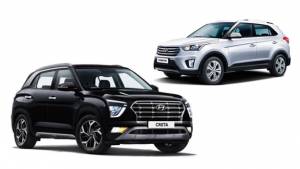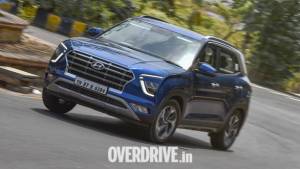2020 Hyundai Creta road test review
I remember thinking to myself "What an absolutely sorted car this is!", when I first drove the first-generation Creta, introduced in 2015. This was at a time when the hottest ticket in the mid-size SUV space was the Renault Duster, mind you. Fast forward to 2020 and over five lakh of them on our roads later, I find myself wondering if the all-new Creta really can take everything that made the original that successful, and improve on it, especially with rivals like the Kia Seltos not putting a single foot wrong. We got our hands on the 1.4-litre turbo petrol, equipped with a 7-speed dual clutch transmission (just days before the lockdown) to find out just how sorted the new Creta is.
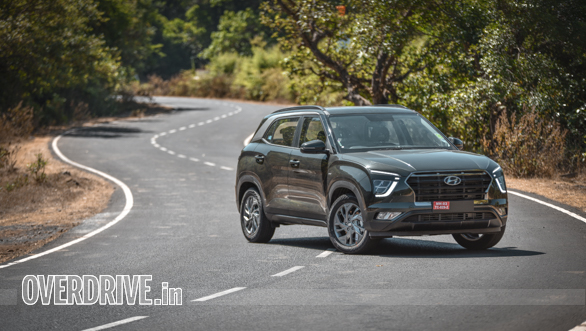
How does it look?
Right, the elephant in the room. There's no escaping the fact that the new Creta with its sensuous sportiness styling doesn't have the same effortless good looks as its predecessor, or even some of its rivals now. The front, with its split-headlights and oversized 'cascading' grille inspired by larger Hyundai's may seem like a touch too far, but it does look more proportional in person, even bordering on sophisticated-looking from certain angles.
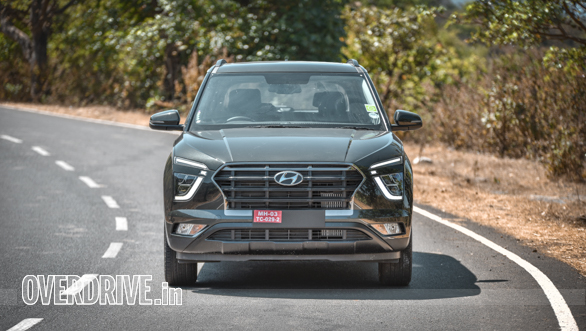
The LED DRLs continue down through the brow, into a spot, and then to the headlights. This top variant gets a tri-beam projector setup, while the turn indicators are placed quite low, alongside the fog lamps. Strong character lines on the fenders and 17-inch wheels make for a fairly muscular side profile, offset nicely by the contrasting trim on the C-pillars and black roof.
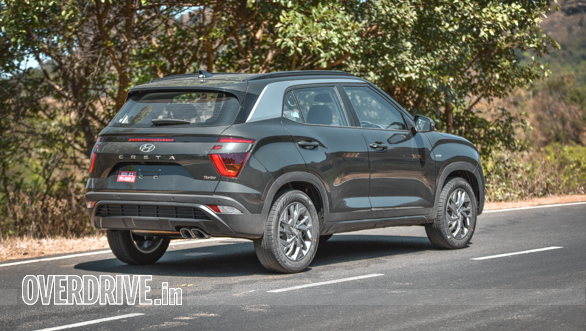
Round the rear, more complex surfacing and low-placed split tail lights make it look a bit busier than it needs to, but it's the Creta's more attractive side. Especially with the twin tailpipe exits on this turbo model. It's the only powertrain to get these, as identified by the solitary Turbo badge on the boot, while the rear disc brakes are available across powertrains in the top end variants. New colours, like this forest green we have on test, add to the overall premium, if slightly confused, look the all-new Creta has.
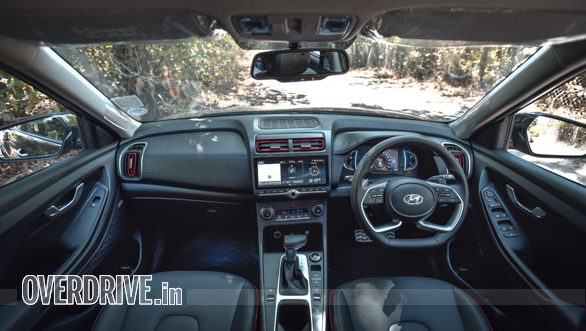
What about the cabin?
There's a similar sense of elements in the cabin being not being in harmony with each other, with the hard edges of the central console clashing with the soft curves of the upper dash and AC vents for example. But the elements and materials of the cabin in themselves feel largely premium, though some surfaces, like the plain plastic around the climate controls looks severely out of place. The four-spoke D-cut steering wheel looks quite modern, is perfectly-sized, and the bottom spokes help when you're making U-turns but it only adjusts for tilt and not reach.
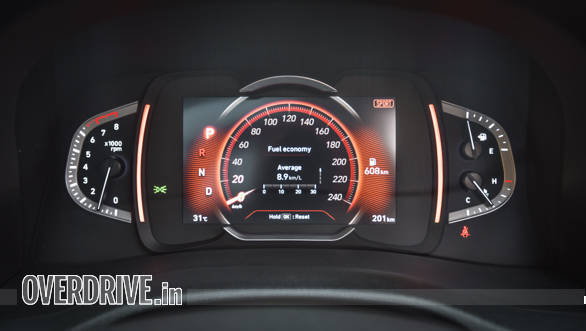
But it's likely the long list of features that'll get your attention. Instrumentation consists of an analogue rev counter and 7-inch digital instrumentation screen, with dial colours that switch depending on the drive mode you're in. The 10.2-inch infotainment comes with BlueLink connectivity (not enabled on our tester), and affords voice control of features like the impressive panoramic sunroof, and is paired with an eight speaker Bose setup which has better clarity than the similar setup in its chief rival. There's single-colour ambient lighting, wireless charging, segment-first ventilated seats and paddleshifters for the DCT, not to mention windowshades in the rear, controls for the neatly integrated air purifier, and a rear bench that can be reclined.
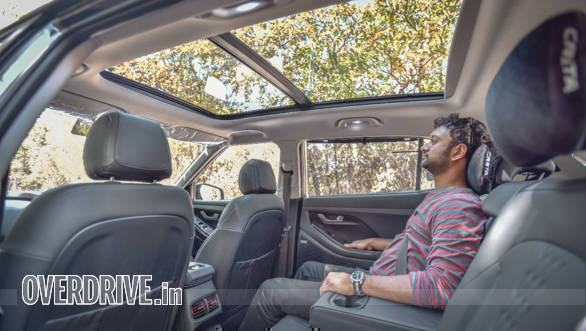
Speaking of seating, which is firm but could do better in terms of under thigh support, the extra recline at the rear and neck pillows do help you settle in for a long journey. And three adults abreast in the rear will still be rubbing shoulders, though it's more comfortable for the middle passenger with a dedicated headrest. Rounding off the list of features, this top variant gets six airbags, ESC and Vehicular Stability Management, apart from hill start assist and terrain modes that alter the throttle response and electronic nannies for the safest progress in muddy, sandy and snowy conditions.
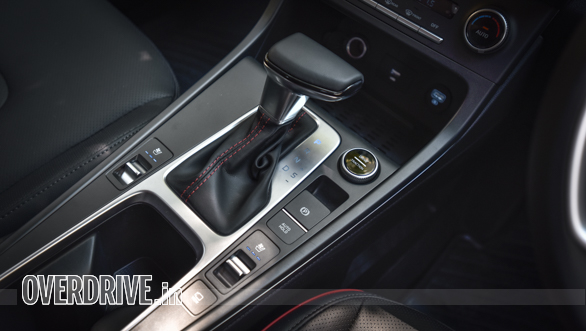
How does it drive?
The Creta gets a choice of three engines, all BSVI-compliant. A 1.5-litre petrol (6MT/CVT), 1.5-litre diesel (6MT/6AT) and this, the 1.4-litre turbo petrol available only with a 7-speed DCT, a lineup exactly similar to the Kia's. With 140PS and 242Nm, it's an engine that moves the roughly 1.3 tonne Creta with great enthusiasm! Along with improvements in the NVH package of the Creta, it's also a very refined engine. Though it sounds just the right amount of urgent when running through to the redline, a trip you'd enjoy making very much.
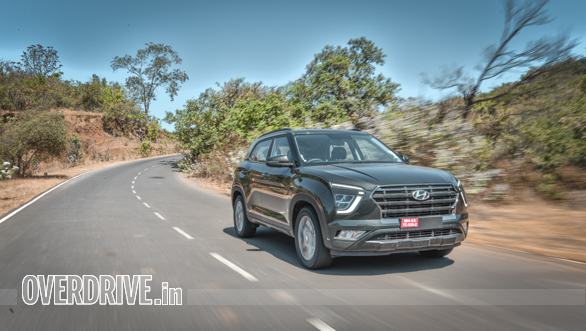
On our test car with under 100km on the meter, shifts via the paddleshifters felt instant and feel snappy, just like how a DCT should feel, feeling quicker than those on the Seltos but time will tell if it stays that way. The gearbox is intuitive enough, especially in Sport mode, that you don't really feel the need for manual control even when hitting a twisty section. In our testing, the 0-100kmph came up in a very quick 9.7 seconds, while our acceleration kickdowns from 30-50/50-70kmph hovered around the 2s mark. In regular Comfort mode, the 'box shifts up at about 2,000rpm to keep up with traffic and the motor feels supremely unstressed out on the highway, running at about 2,200rpm in seventh. We managed 16.3kmpl in our efficiency testing on the highway, with that figure dropping to a strictly-average 11.2kmpl in the city. Note for all the enthusiasts looking to gun theirs at every opportunity, when we were running the Creta hard, numbers dropped to the high single digits on the instrumentation.

But more importantly, the new Creta is far better in its driving dynamics. With a steering wheel that's far better to hold, the feel of the steering has improved with weight that's almost spot on though feedback is still not it's strongest point. Ride quality has firmed up as well, where it's good on most roads but does catch sharp edges. But that does mean that the rear of the Creta no longer bounces on the rebound after speedbreakers, or dips in the road. With a nice positive feel from the all-around disc brakes brakes, the Creta stopped from 100- in 42.7m and 3s, tracking in a straight line with zero drama. The improved braking sure helps when you up the pace, providing a nicer sense of balance when braking hard for corners. Not to mention the ABS being far better calibrated now, where the old Creta had the tendency to have the ABS kick in early and dive into understeer. Combined with the meaty mid-range of the turbo motor, the Creta really does feel like it's an SUV you could hustle and have a blast while at it.
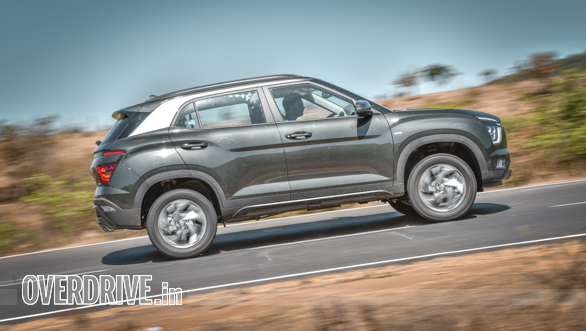
Verdict
We think the biggest drawback of the new Creta, it's polarising looks, is something that most people will learn to live with the more they see the car, and we're likely to see a lot on our roads once the virus threat tides over, however far away that may be. Despite the premium interiors, long list of features, we still feel this segment of SUV has bloated in price, with this variant coming in just over Rs 20 lakh, on road in Mumbai. If you're on the fence about the reliability of some of the newer entrants to the market, the new Creta has you well covered.
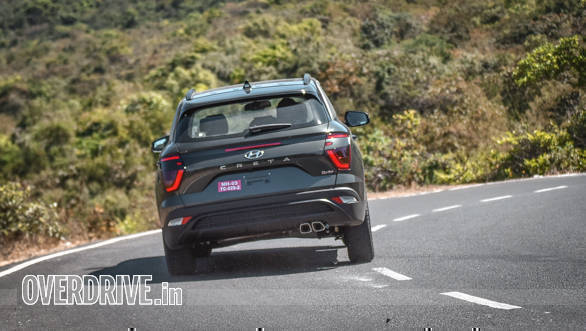
Also see: 2020 Hyundai Creta | Road Test
Photography by Anis Shaikh
Starts Rs 9.99 Lakhs
1353cc
Automatic
115
242
-NA-
Starts Rs 9.95 Lakhs
1497cc
Automatic
115
250
20.8 Kmpl
Starts Rs 8.49 Lakhs
1330cc
CVT
156
154
-NA-
